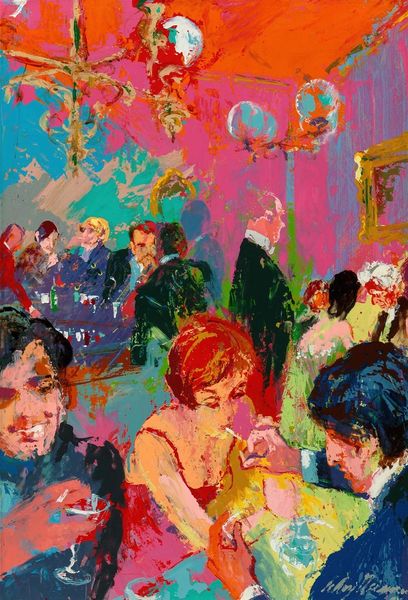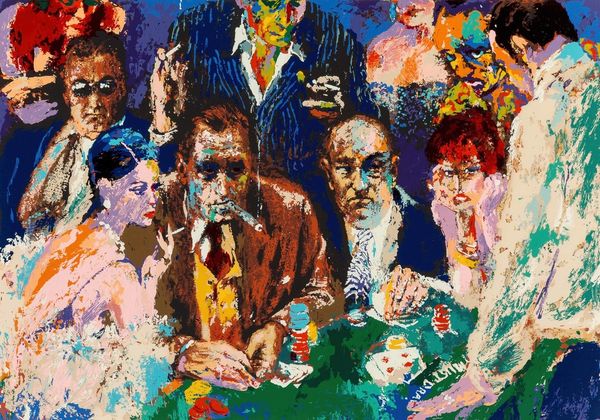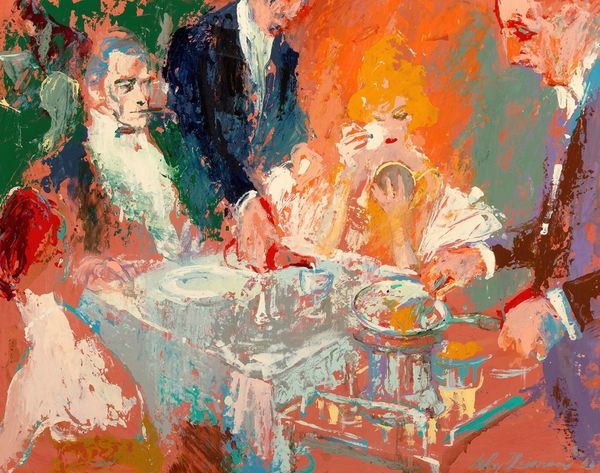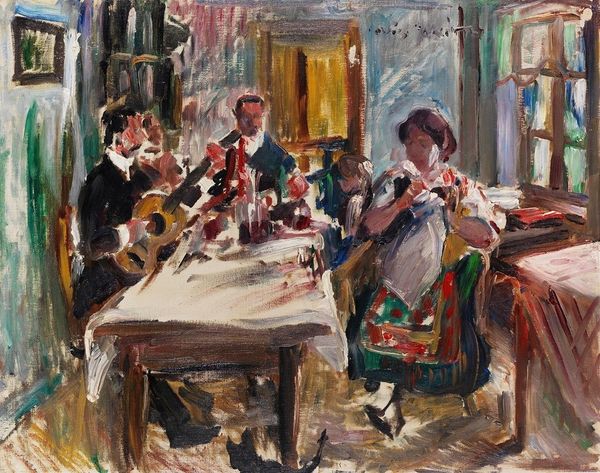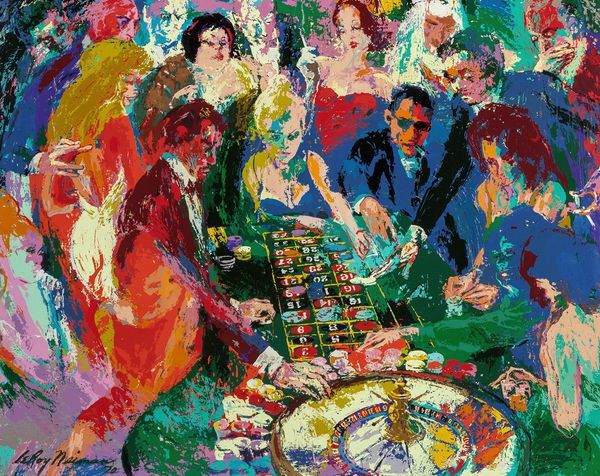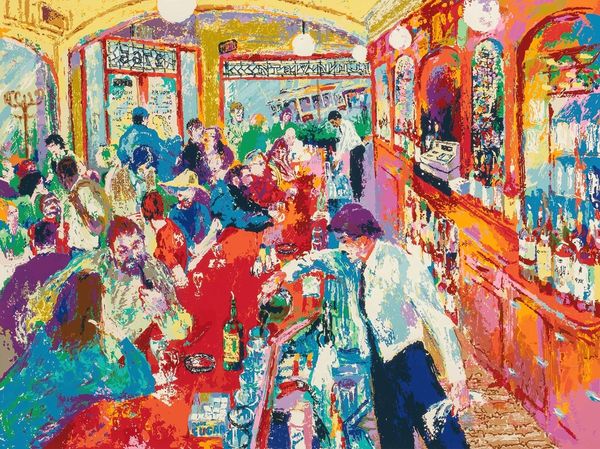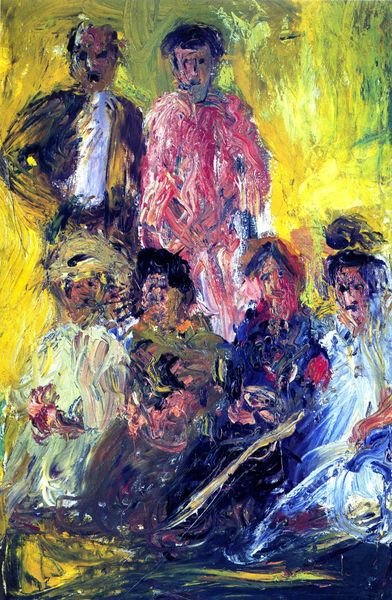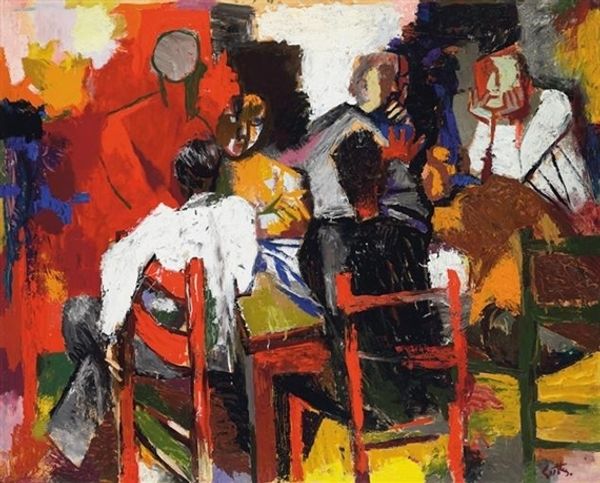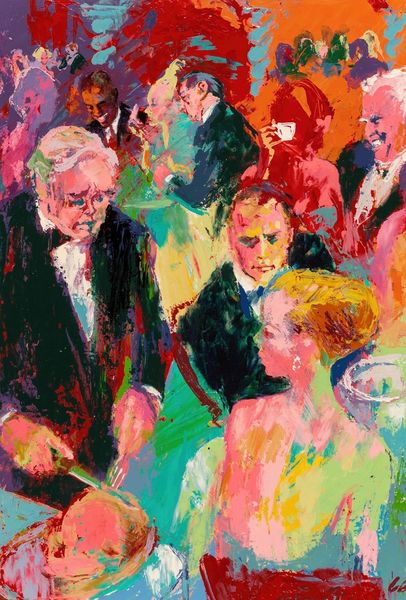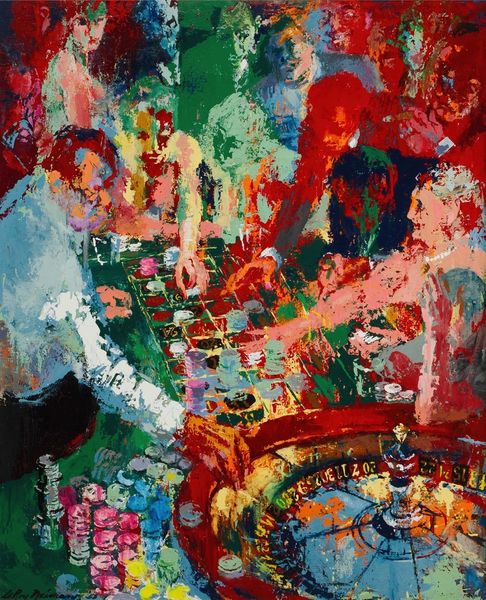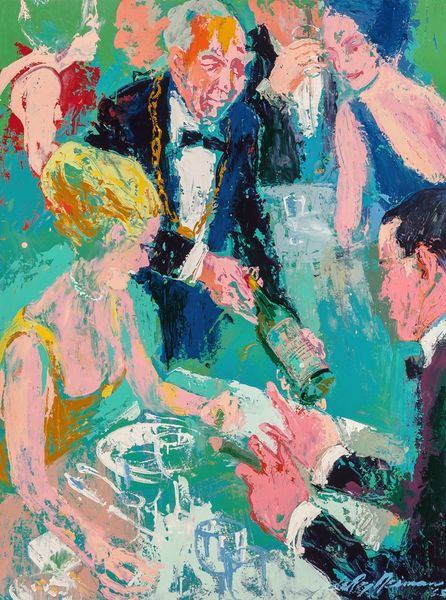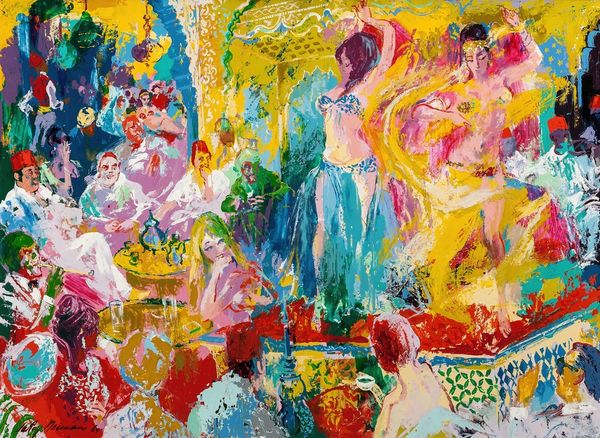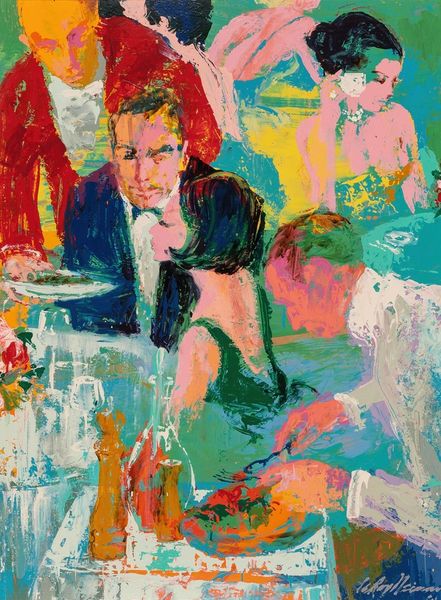
Copyright: Modern Artists: Artvee
Editor: This is "Baden-Baden," an acrylic on canvas painting by LeRoy Neiman, from 1987. The energy just leaps off the canvas. All these figures gathered around what looks like a roulette table… it feels like a snapshot of high society. What do you see in this piece? Curator: It's a vibrant tableau of power and privilege, wouldn't you agree? Consider the social context. Neiman painted this during the Reagan era, a time of escalating wealth disparity. This scene, with its gambling and opulence, speaks to that specific historical moment. How do you think the figures in this artwork embody the social climate of the 1980s? Editor: I guess they seem a little… disconnected? Like they're absorbed in their own little worlds of money and status, but it feels artificial. Is Neiman making a judgement, maybe? Curator: Exactly! His use of neo-expressionist techniques is deliberate; the distorted figures, the jarring colors, they all work to reveal the superficiality and excess of that world. And let’s not forget the gendered dynamics on display here; do you see any power imbalances within the group? Editor: I see what you mean. A lot of the women seem almost decorative compared to the men making the bets. So Neiman isn’t just showing a scene; he’s critiquing it through these artistic choices. Curator: Precisely. Neiman prompts us to consider the role of art as a form of social commentary, doesn't he? To question the narratives of success and happiness that were so prominent in the '80s, especially in the face of political and socioeconomic tensions. Editor: I had never really considered it that deeply! I thought it was just a depiction of a fun scene at a casino, but I understand how important social commentary and context is now! Curator: And this is precisely why looking at art history through intersectional lenses reveals to us a more full image of art itself.
Comments
No comments
Be the first to comment and join the conversation on the ultimate creative platform.

